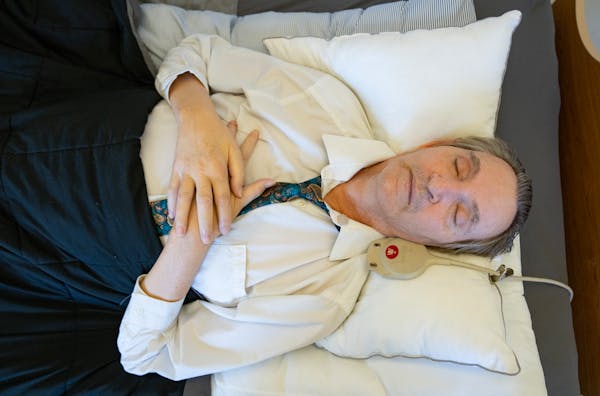Star Tribune reporter Rachel Hutton and photojournalist Alex Kormann give a behind-the-scenes look at how their obituary for Bill Alkofer, "Portrait of death," came together.
How did you find this story and why did you pursue it?
Rachel: Star Tribune editor Lisa Legge, a good friend of Bill's, let my editor know he was willing to let us document his death. I was surprised that Bill would share such a vulnerable time so publicly, as most people's final weeks are only witnessed by a small, intimate circle. And Americans are so uncomfortable with death. We started with the idea that someone who spent his career documenting others — and who recognized how witnessing other people's life experiences can increase our sense of humanity — was willing to return the favor. Meeting Bill and discovering he was such an interesting, unconventional, complicated person enriched the story in ways I couldn't have imagined.
How did you report this story?
Rachel: Between March and June, I made about eight visits to see Bill in his St. Paul nursing home, often staying for hours. Bill was totally open to my presence and questions. Sometimes we talked. Sometimes I hung around while other people visited. Often, I adjusted his fans or pillows or helped him drink a beverage. Once we played Trivial Pursuit. Time makes all the difference in a story like this. Not only does the subject of a profile tend to open up more, but you also observe interactions that help you "show" what the person is like rather than simply "tell."
What was it like to photograph a photographer?
Alex: I spent my first few visits with Bill talking about both of our lives and journeys in relation to photography. He was sort of sizing me up. Bill had been a photojournalist for 40 years. That's 15 years longer than I've been alive. Bill asked me about how I view our role as storytellers, the type of work that interests me and old-time photographers that may have served as inspiration. After garnering his approval, he really let me work freely. Of course, he would chime in occasionally with ideas of moments or scenes and you could see a smile creep across his face when he figured out the angle I was working for any given moment.
Did Bill place any limitations on what you could photograph?
Alex: The only time Bill stopped me was when the light from one of his two small windows shone through in the later afternoon and hit my face in a way that sparked his interest. He'd ask me to stop, turn my head towards the light and look at him. "Now stay there for a minute," he would say. He essentially was posing me so he could make a mental photograph. His hands no longer let him hold a camera, but his eyes still saw the world as though he was looking through a viewfinder.
How did you handle covering such a difficult story?
Alex: It is definitely a balancing act to document someone's death while also building a relationship with them. I think anytime you do an in-depth, documentary style photo story, building a close relationship with your story partner (I don't like the word subject) is paramount. I've documented multiple people's battles with cancer, with one ending in a death. That interest stems from losing my own father to cancer when I was 17. I think experiencing such a significant loss at such a young age prepared me in a way to cover stories like this with empathy and an understanding of self-care.
Bill and I spent a lot of time talking and getting to know each other. I listened not only to his past, but also his fears for the future and his sadness as death approached him at an unknown speed. Those conversations weighed heavily on me and I felt a responsibility to document the final weeks of his life. I wouldn't get a second chance at that. I was Bill's photographer. When I put the camera down, I was ready to have those emotional conversations as a friend. To process all this, I relied on my partner, Elizabeth, as well as my editors and friends in the industry to support me. They would check in frequently and make sure I was taking time to process the loss and I would reach out when I needed an outlet.
I think the most important thing here is to just remember we are humans first and journalists second. We need time to process like everyone else and even if you know someone will likely die soon, it still hits hard the moment it happens.
Anything else readers might be interested to know?
Rachel: I was among the last people to see Bill alive. I spoke with him briefly on the phone before I headed over, but he was sleeping soundly by the time I arrived. So I waited for an hour, then decided I could just come back in a few days. I left a note to that effect on his nightstand. Even knowing Bill was "a dying guy," as he put it, his death still came as a surprise. (I was able to describe the rest of the evening through interviews with Cindy, Richard and Julie.)
And one more gem I ran out of space to include: Bill had a tradition of putting on red lipstick and blue eyeshadow when he had his drivers' license photo taken. Few people would do that. But of course Bill Alkofer would
.
Singing, ceremonies and straw hats: Olympics opening ceremony in Tahiti centers Polynesian culture

Three 101-year-old friends recall fond memories in 1940s Alexandria
Celine Dion makes musical comeback at Paris Olympics with Eiffel Tower serenade

